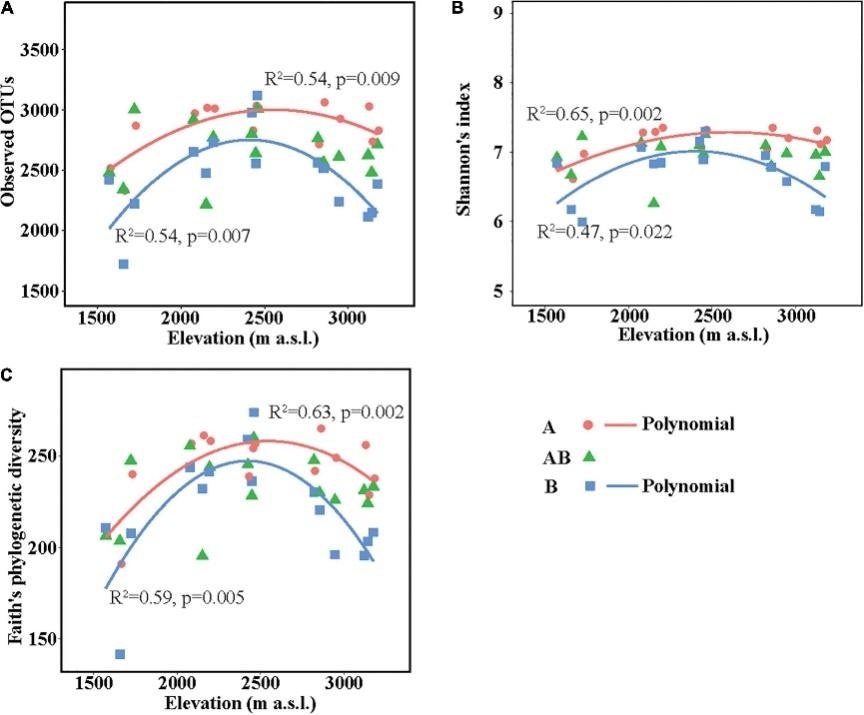Soil microorganisms are crucial constituents of the soil ecosystem. They have vital roles in nutrient cycling and biogeochemical processes.

Soil bacterial community richness and α-diversity along the elevational gradient. (A) Observed operational taxonomic units (OTUs), (B) Shannon’s diversity, and (C) Faith’s phylogenetic diversity. Image Credit: Wuhan Botanical Garden.
How the bacterial community is distributed along the elevational gradient plays a crucial part in the prediction of climate feedbacks and future ecosystem functions. The patterns of distribution of soil bacterial community in surface soil layer along elevational gradients have been well studied. However, not much is known about those in the deep soil layer.
Scientists headed by Prof. Feng Liu from the Wuhan Botanical Garden of the Chinese Academy of Sciences (CAS) sought to find the spatial pattern of soil bacterial community along with an elevational gradient in the deep soil layer, as well as to unravel their determining factors.
To this end, they performed a study in the Taibai Mountain and investigated the diversity and composition of the soil bacterial community with the help of 16S rRNA gene sequencing.
The researchers note that soil bacterial diversity and compositions varied along the elevational gradient in all soil layers. The bacterial diversity in soil exhibited a hump-shaped trend along with elevation. The pH in the surface soil layer was the driving factor that governs the elevational patterns of bacterial diversity and community composition.
By contrast, in the deep layer, both soil carbon availability and pH could determine the elevational pattern of bacterial diversity. Moreover, the composition of the bacterial community was more represented by soil carbon fractions.
These findings reiterate the strong connection between bacterial communities and soil organic carbon properties. They could also allow better prediction of soil carbon cycling to environmental changes in the future.
Source:
Journal reference:
Tian, Q., et al. (2021) Soil pH and Organic Carbon Properties Drive Soil Bacterial Communities in Surface and Deep Layers Along an Elevational Gradient. Frontiers in Microbiology. doi.org/10.3389/fmicb.2021.646124.